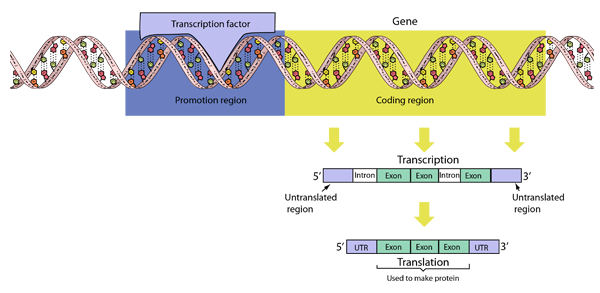Gene
The term "gene" refers to a functional segment of DNA, which in eukaryotic cells would be a part of a chromosome in the nucleus of the cell. The gene is the unit of inheritance: we view the DNA as containing the full set of genes that determine the inheritable characteristics, so the gene is the smallest functional element in that master blueprint for inheritance. Functionally, the gene is a sequence of nucleotides that code for a specific protein. The nucleotides in the DNA code for amino acids in groups of three. There are 64 possible triplet "codons", and their correlation with amino acids has been worked out to reveal the "genetic code". The term genome for a given organism refers to the collection of all the genes and other information in the DNA.
The process of reading and transferring the genetic information from the coding region of the DNA is called transcription.

| Gene Expression and Regulation |
Reference
Audesirk & Audesirk
Ch 10
| HyperPhysics***** Biology | R Nave |